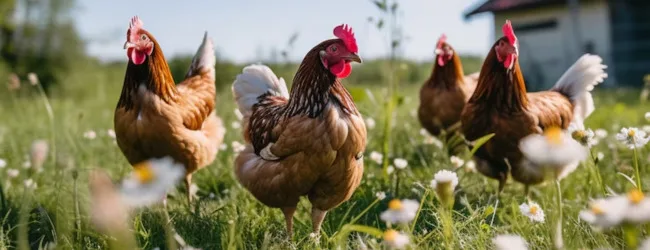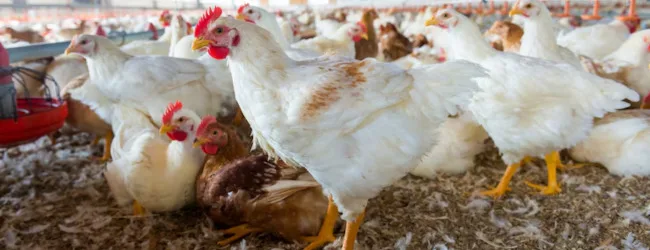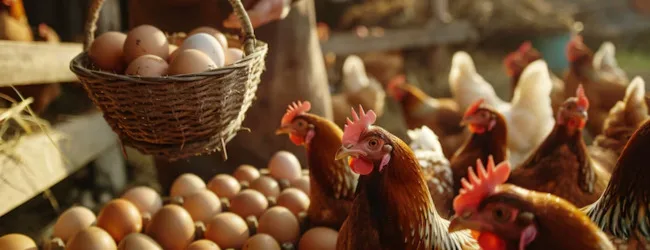Table of contents
- What is Poultry Farming?
- Why Start a Poultry Farming Business in India?
- The Cornerstone: Your Poultry Farm Business Plan
- Step-by-Step Guide to Creating Your Poultry Farm Business Plan
- Key Considerations for Your Poultry Farming Business Plan
- Estimating Poultry Farm Setup Costs in India
- Understanding Profitability in Poultry Farming (India Context)
- Legal Requirements and Licenses for Poultry Farming in India
- Government Schemes and Support (India)
- Conclusion
- Frequently Asked Questions (FAQs)
India’s demand for eggs and chicken meat is constantly rising, driven by a growing population, increased income levels, and greater awareness of protein’s nutritional benefits. This makes poultry farming an attractive business venture. However, like any business, success requires careful planning. A well-structured poultry farm business plan is not just a document; it’s your roadmap to navigating the challenges and achieving profitability.
This comprehensive guide will walk you through everything you need to know about creating a robust poultry farm business plan, covering setup costs, potential profits, essential procedures, legal requirements, and more, with a specific focus on the Indian context.
What is Poultry Farming?
Poultry farming involves raising domesticated birds such as chickens, ducks, turkeys, and geese primarily for their meat or eggs. In India, the most common types are:
- Broiler Farming: Raising chickens specifically for meat production. Broilers grow quickly, typically reaching market weight in 6-7 weeks.
- Layer Farming: Raising hens specifically for egg production. Layer hens start laying eggs around 18-20 weeks of age and continue for about 72-78 weeks.
Why Start a Poultry Farming Business in India?
Starting a poultry farm can be a rewarding venture for several reasons:
- High Demand: Chicken meat and eggs are staple protein sources for a large segment of the Indian population, ensuring a consistent market. The Indian poultry market is one of the fastest-growing agricultural sectors.
- Quick Returns: Especially with broiler farming, you can start seeing returns on your investment within a few months.
- Lower Initial Investment: Compared to other livestock farming, poultry farming can often be started with a relatively lower capital investment, especially on a smaller scale.
- Employment Generation: Poultry farms create jobs, particularly in rural areas.
- Government Support: The Indian government and various state governments offer subsidies and support schemes (like those under the National Livestock Mission) to encourage poultry farming.
- Efficient Growth: Modern poultry breeds have excellent feed conversion ratios (FCR), meaning they efficiently convert feed into meat or eggs.
The Cornerstone: Your Poultry Farm Business Plan

A poultry farm business plan is a crucial document that outlines your business goals, strategies, market analysis, operational plan, and financial projections.
Why is it essential?
- Provides Direction: It acts as a blueprint, guiding your decisions from setup to daily operations.
- Secures Funding: Banks and investors require a detailed business plan before considering loan applications or investments.
- Identifies Challenges: It helps you anticipate potential problems and plan mitigation strategies.
- Measures Success: It sets benchmarks against which you can track your progress.
💡 Pro Tip: If you want to start a poultry business but have too many doubts, connect with a poultry business expert from Boss Wallah for guidance – https://bw1.in/1116
Step-by-Step Guide to Creating Your Poultry Farm Business Plan
A comprehensive plan should cover the following key sections:
Executive Summary:
- A brief overview of your entire plan.
- Your mission (purpose) and vision (long-term goal).
- Highlights of your business concept, market opportunity, and financial projections.
- Your funding requirement (if seeking loans).
Company Description:
- Your business name and legal structure (Sole Proprietorship, Partnership, Private Limited, etc.).
- Location of the proposed farm.
- Brief history (if applicable) and objectives.
Market Analysis:
- Target Market: Who are your customers (local consumers, retailers, hotels, restaurants, wholesalers)?
- Demand Assessment: Research the demand for chicken meat/eggs in your chosen locality or region.
- Competition: Identify existing poultry farms in the area. Analyze their strengths, weaknesses, and pricing. How will you differentiate?
- SWOT Analysis: Analyze your Strengths, Weaknesses, Opportunities, and Threats.
Type of Farming & Scale:
- Specify if you’ll focus on broiler farming, layer farming, or both.
- Define the scale of your operation (e.g., number of birds initially – 500, 1000, 5000?).
Operational Plan:
- Location & Site: Detailed description of the farm site, ensuring suitability (accessibility, water, power, biosecurity). Include a site layout plan.
- Housing: Type of poultry shed (deep litter system, cage system), design specifications (ventilation, space per bird, lighting).
- Equipment: List of necessary equipment (feeders, drinkers, brooders, lighting systems, cages, egg trays, generator, etc.).
- Sourcing Chicks/Birds: Where will you buy day-old chicks (DOCs) or pullets? Ensure they are from a reputable hatchery.
- Feed Management: Type of feed (starter, grower, finisher/layer mash), sourcing (buy ready-made or prepare your own?), estimated feed consumption, and storage.
- Health & Vaccination: Detailed vaccination schedule, disease prevention measures (biosecurity), plan for veterinary support.
- Labor: Number of staff required, roles, and responsibilities.
Marketing and Sales Strategy:
- Product: Chicken meat (live birds, dressed chicken), eggs (table eggs).
- Pricing: How will you determine your prices? (Cost-plus, competitor-based).
- Place (Distribution): How will you reach your customers? (Direct sales, supply contracts, intermediaries).
- Promotion: How will you make potential customers aware of your farm? (Local advertising, word-of-mouth, online presence).
Management Team:
- Details about your experience and qualifications (or your farm manager’s).
- Organizational structure.
Financial Plan:
- Setup Costs: Detailed breakdown of initial investment (land, shed, equipment, initial batch of birds, etc. – see cost section below).
- Working Capital: Funds needed for day-to-day operations (feed, medicines, salaries, utilities) for at least one or two production cycles.
- Funding Sources: How will you finance the project? (Own savings, bank loan – mention specific schemes like MUDRA or NABARD-supported loans).
- Projected Revenue: Estimate income based on production capacity and expected market prices.
- Profit & Loss Projections: Forecast your income and expenses over the first 3-5 years.
- Break-Even Analysis: Calculate the point at which your revenue equals your costs.
- Cash Flow Statement: Track the inflow and outflow of cash.
Legal Requirements & Licenses:
- List the necessary permits and registrations (see legal section below).
Appendix (Optional):
- Include supporting documents like market research data, quotations for equipment, site plans, resumes of key personnel, etc.
Key Considerations for Your Poultry Farming Business Plan

- Location is Crucial: Choose a site away from residential areas but with good road access, reliable water and electricity supply. Ensure proper drainage and minimal risk of contamination. Biosecurity starts with location.
- Breed Selection Matters: Select breeds suitable for your local climate and market demand. For broilers, breeds like Cobb 500 or Ross 308 are popular in India. For layers, White Leghorn crosses or BV380 are common.
- Optimal Housing: The shed design must ensure proper ventilation, temperature control, adequate space per bird (critical for health and growth), and protection from predators and harsh weather.
- Feed is King (and Costly): Feed constitutes 60-70% of total production costs. Ensure high-quality, balanced feed. Poor feed quality directly impacts growth, egg production, and profitability.
- Prioritize Health & Biosecurity: Implement strict biosecurity measures (restricting visitors, disinfecting equipment, proper vaccination schedule) to prevent disease outbreaks, which can wipe out profits. Have a veterinarian on call.
- Effective Waste Management: Plan for the safe disposal or utilization of poultry manure. It can be a source of additional income if composted and sold as fertilizer.
- Don’t Neglect Marketing: Producing efficiently is only half the battle. Secure your market before your birds or eggs are ready for sale.
Estimating Poultry Farm Setup Costs in India
Costs can vary significantly based on location, scale, and type of farming (broiler/layer, deep litter/cages). Here’s an indicative breakdown for a small-to-medium scale farm (e.g., 1000 broilers):
- Land: Highly variable. Leased land is often preferred initially to reduce capital outlay.
- Shed Construction: (Assuming deep litter system) ₹250 – ₹450 per sq. ft. For 1000 broilers needing approx. 1-1.5 sq. ft. each, you might need a 1500 sq. ft. shed. Cost: ₹3,75,000 – ₹6,75,000. Cage systems for layers are more expensive initially.
- Equipment: Feeders, drinkers, brooders, lighting, basic tools. Cost: ₹50,000 – ₹1,00,000.
- Cost of Chicks (DOCs): ₹35 – ₹55 per broiler chick. For 1000 chicks: ₹35,000 – ₹55,000. Layer chicks are slightly more expensive.
- Initial Feed & Medicine: Cost for the first batch until sale (approx. 6-7 weeks for broilers). Feed cost might be around ₹100-₹130 per bird for the entire cycle. For 1000 birds: ₹1,00,000 – ₹1,30,000. Add ~₹5,000-₹10,000 for initial medicines/vaccines.
- Electricity & Water Setup: Installation charges, initial deposits. Cost: ₹20,000 – ₹50,000.
- Licenses & Miscellaneous: ₹10,000 – ₹25,000.
- Working Capital (Buffer): Recommended having funds for at least one subsequent batch’s initial expenses. ₹50,000 – ₹1,00,000.
Total Estimated Setup Cost (Indicative for 1000 Broilers): ₹6,40,000 – ₹11,45,000 (excluding land purchase cost). This is a rough estimate; detailed local quotes are essential.
Understanding Profitability in Poultry Farming (India Context)

Profitability depends heavily on efficient management, market prices, and controlling costs, especially feed.
Key Performance Indicators (KPIs):
- Feed Conversion Ratio (FCR): Kilograms of feed needed to produce one kilogram of meat or one dozen eggs. Lower FCR means higher profit. (Good broiler FCR: 1.6-1.8).
- Mortality Rate: Percentage of birds lost during the cycle. Lower mortality is crucial. (Aim for < 5%).
- Livability Rate: Percentage of birds that survive. (Aim for > 95%).
Revenue Sources:
- Sale of mature broilers (priced per kg live weight).
- Sale of eggs (priced per egg or per tray).
- Sale of culled birds (layers at the end of their cycle).
- Sale of poultry manure.
Major Costs (Recurring):
- Feed (Largest component).
- Chick cost (for subsequent batches).
- Medicines and Vaccines.
- Labor salaries.
- Electricity and Water bills.
- Transportation.
- Shed maintenance.
Profit Margin:
- Broilers: Highly variable due to fluctuating market prices for feed and chicken meat. Profit per bird can range from ₹15 to ₹50+ in good cycles with efficient management. A bad cycle (high feed cost, low selling price, disease) can even lead to losses.
- Layers: Generally more stable but requires longer investment commitment. Profit per bird per year can range from ₹100 to ₹180+, depending on egg prices and feed costs.
- Example (Simplified Broiler Batch – 1000 birds):
- Assume average weight gain: 2 kg/bird
- Total meat production: 1000 birds * 2 kg = 2000 kg (approx., considering mortality)
- Assume selling price: ₹110/kg
- Total Revenue: 2000 kg * ₹110 = ₹2,20,000
- Assume total cost per bird (feed, chick, medicine, misc.): ₹160
- Total Cost: 1000 birds * ₹160 = ₹1,60,000
- Gross Profit (per batch): ₹2,20,000 – ₹1,60,000 = ₹60,000 (before fixed costs like labor, depreciation, loan interest).
- Note: These figures are purely illustrative and change rapidly.
Highlight: Efficient management, bulk purchasing of feed, good biosecurity, and securing a stable market are key levers for maximizing profit.
ALSO READ | Dairy Farm Business: A Comprehensive Plan [Setup Cost, Profit Margin & More]
Legal Requirements and Licenses for Poultry Farming in India

Requirements can vary slightly by state and scale of operation. Always check with local authorities. Common requirements include:
- Permission from Local Authority: NOC (No Objection Certificate) from the Gram Panchayat or Municipality.
- Consent to Establish/Operate: From the State Pollution Control Board (often required for larger farms). Check thresholds in your state.
- Registration: With the State Animal Husbandry Department.
- GST Registration: If your annual turnover exceeds the government-prescribed threshold (currently ₹40 lakhs for goods in most states; check latest rules).
- FSSAI License: If you plan to process chicken meat or sell eggs directly with branding.
- Water Source Permission: If groundwater is extracted via borewell,
- Electricity Connection: Commercial connection may be required.
Always verify the latest regulations applicable in your specific state and district.
Government Schemes and Support (India)
The government actively supports the poultry sector. Explore these options:
- National Livestock Mission (NLM): This central scheme has sub-missions that often include components for poultry entrepreneurship development, offering subsidies on capital costs for establishing farms, hatcheries, feed units, etc. Check the latest NLM guidelines on the Department of Animal Husbandry & Dairying website.
- NABARD (National Bank for Agriculture and Rural Development): While direct schemes like PVCF might be integrated into NLM, NABARD provides refinancing options to banks for agricultural loans, including poultry farming. Approach commercial banks, cooperative banks, or RRBs for loan options potentially refinanced by NABARD. They often have specific poultry loan products.
- State-Specific Schemes: Many state governments have their own subsidies or incentives for poultry farmers. Check your state’s Animal Husbandry Department website.
- MUDRA Loans: Small-scale poultry units might be eligible under the Pradhan Mantri MUDRA Yojana (PMMY) for loans up to ₹10 lakhs.
Highlight: Thoroughly research current schemes and eligibility criteria before applying. A strong poultry farm business plan is essential for loan applications.
ALSO READ | How to Get a Business Loan for a Startup in India? A Complete Guide
Need Expert Guidance?
Starting a business can be challenging, but you don’t have to do it alone! At Boss Wallah, our 2,000+ business experts are ready to provide valuable insights and guidance. Whether you need help with marketing, finance, sourcing, or any other area of any business, our business experts are here to help you succeed- https://bw1.in/1116
Confused about Which Business to Start?
Want to start your own business but unsure which one to choose? Explore Boss Wallah, where you’ll find 500+ courses by successful business owners, featuring practical, step-by-step guides on starting and growing various businesses.
Find your perfect business idea today – https://bw1.in/1111
Conclusion
Poultry farming in India offers significant potential for entrepreneurs willing to invest time, effort, and capital. While the demand is strong, success hinges on meticulous planning, efficient management, and continuous learning.
Creating a detailed poultry farm business plan is the critical first step. It forces you to think through every aspect of the business, from securing the right location and managing finances to ensuring bird health and finding reliable markets. Use this guide as a foundation, conduct thorough local research, and build a plan that paves the way for a profitable and sustainable poultry venture.
Frequently Asked Questions (FAQs)
How much land is needed to start a 1000-bird poultry farm?
For a 1000-broiler farm using a deep litter system, you’ll need about 1500 sq. ft. for the shed itself. Additionally, you need space around the shed for movement, storage, biosecurity buffer, and potential future expansion. A plot of around 0.25 to 0.5 acres should suffice, depending on layout and local regulations.
Is poultry farming genuinely profitable in India?
Yes, it can be highly profitable if managed efficiently. Key factors influencing profit are feed cost management, disease control (low mortality), achieving good FCR, and securing favorable market prices for meat or eggs. Poor management can quickly lead to losses.
What is the minimum initial investment for a small poultry farm?
For a very small backyard unit (50-100 birds), investment might be under ₹50,000. For a more commercial setup of 500-1000 birds, as estimated above, expect costs ranging from ₹3 lakhs to ₹10 lakhs+, excluding land purchase, depending heavily on construction quality and location.
Broiler vs. Layer Farming: Which is better for beginners?
Broiler farming offers quicker returns (6-7 weeks per cycle), potentially making cash flow easier initially. Layer farming requires a longer commitment (birds lay for over a year) and higher initial investment (especially if using cages), but can provide steadier, daily income once hens start laying. The choice depends on your capital, risk appetite, and local market demand.
What are the main risks in poultry farming?
The major risks include disease outbreaks (can cause high mortality), fluctuating feed prices (major cost component), volatile market prices for chicken/eggs, climate stress affecting bird performance, and inadequate biosecurity.
Do I need special training to start poultry farming?
While not legally mandatory for small farms, practical training is highly recommended. Understanding bird management, feeding, disease prevention, and biosecurity is crucial. Many agricultural universities, KVKs (Krishi Vigyan Kendras), and state animal husbandry departments offer short training programs.
How can I get a loan for my poultry farm business plan?
Prepare a detailed poultry farm business plan. Approach commercial banks, Regional Rural Banks (RRBs), or Cooperative Banks. Mention government schemes like NLM support or potential NABARD refinance options. Banks like SBI, Bank of Baroda, and others have specific agricultural loan products that may cover poultry farming. Your plan’s viability and your credibility are key.
What government subsidies are available for poultry farming in India?
The primary source is the National Livestock Mission (NLM), which often provides capital subsidies (e.g., up to 50%) for establishing parent farms, hatcheries, broiler/layer farms, and feed units (subject to scheme guidelines and limits). Check the latest NLM guidelines and state-specific schemes from the Animal Husbandry Department.



1 comment
[…] square foot per bird, but this can vary depending on the breed and your management style. Refer to poultry farming business for more […]
Comments are closed.